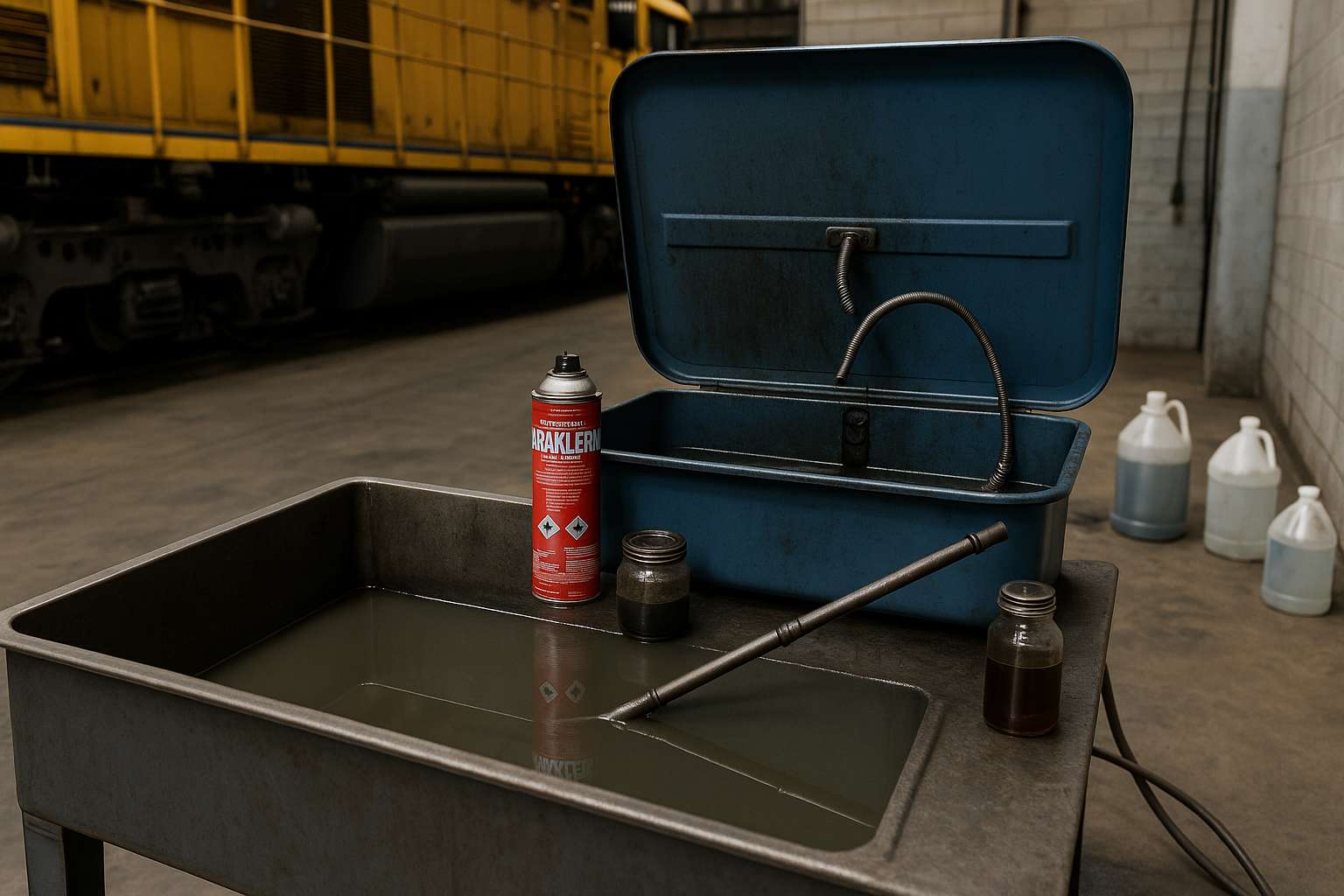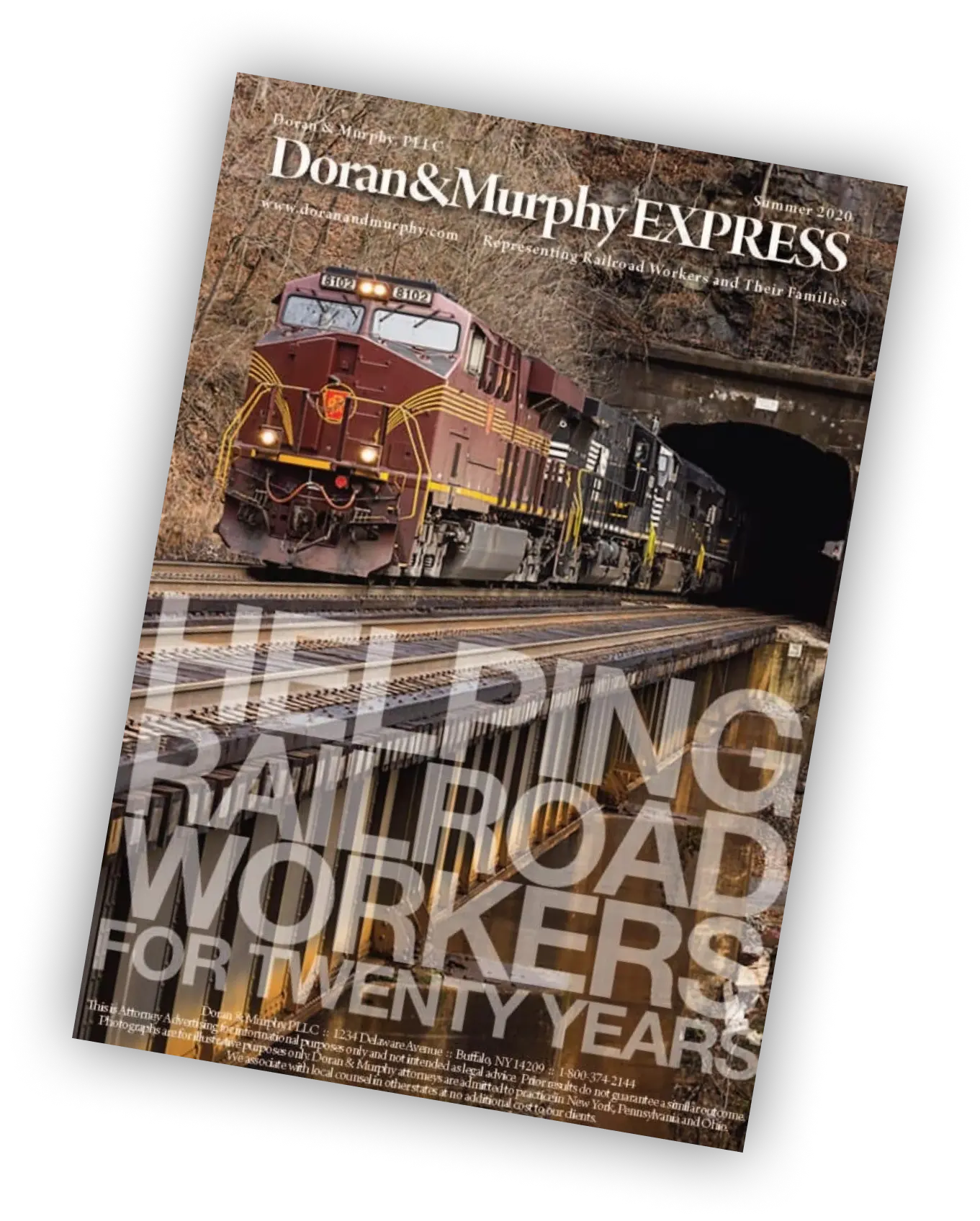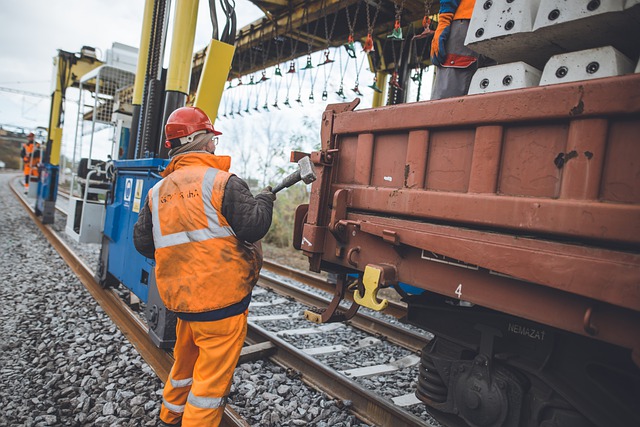
Railroad mechanics, diesel locomotive machinists, electricians, laborers, and other railroad workers who worked in large diesel repair shops had regular exposure to toxic chemicals from parts washers, degreasers, and solvents. These cancer-causing exposures were in addition to the various other hazardous cancer-causing substances found in railroad shops, which were discussed in a prior blog, such as asbestos, diesel exhaust, and welding fumes.
What hazardous degreasers and chemicals were used by railroads?
Over the years, the nation’s railroads used many different solvents, degreasers, and chemicals in repair shops, which have been linked to cancer and other serious health effects, including:
- Mineral Spirits
- Naphtha
- Stoddard Solvents
- Safety-Kleen
- Gasoline
- Trichloroethylene
- Carbon Tetrachloride
- Methyl Chloroform
- Tetrachloroethylene
- Perchloroethylene
- Toluene
- Brakleen
- And many more

Unfortunately, the fumes around these spray cans, parts cleaners, and vats were toxic and could be inhaled by workers who were not issued respiratory protection until more recently. Railroad retirees, especially those who worked in the 1960s, 1970s, and 1980s, when older and more toxic solvents were used, are most at risk for developing cancer today, even though the exposures were many years ago.
Over the decades, many railroads contracted with outside companies and vendors to provide these parts cleaners and services. For instance, Safety-Kleen offered a parts washer service to commercial customers, including railroads. Under this program, railroads could lease parts degreasing units and parts cleaner sinks connected to 16-gallon or 30-gallon drums containing Safety-Kleen 105 Solvent. On a periodic basis, Safety-Kleen representatives would come and replace the used solvents with new solvents. Safety-Kleen 105 Solvent was one of many different solvents that railroads used, which contained benzene, which has been the focus of a prior blog.
Railroad shop workers would often work with or around parts cleaners to remove grease and grime from locomotive parts. The use of toxic solvents created “inhalational exposures” when fumes were breathed in, as well as “dermal exposures” when the solvents came in contact with skin. Some workers may have also washed their hands in the solvents to remove grease and dirt, and unknowingly greatly increased their risk of getting cancer.
What types of cancer have been linked to solvents from parts cleaners?
The answer depends on which type of solvent was used by the different railroads. Our railroad cancer lawyers know that different railroads used specific degreasers and solvents, and that is why experience matters. By way of example, some railroads used Trichloroethylene, which has been linked to kidney cancer and non-Hodgkin’s Lymphoma. Other railroads used Mineral Spirits, Naphtha, Stoddard Solvents, Safety-Kleen, or even gasoline, all of which contain benzene, which has been linked by certain medical studies to various types of cancer:
- Acute Myeloid Leukemia (AML)
- Myelodysplastic Syndrome (MDS)
- Chronic Myeloid Leukemia (CML)
- Chronic Lymphocytic Leukemia (CLL)
- Lung Cancer
- Bladder Cancer
- Other types of solvents have been linked to different types of cancer, including gastrointestinal cancers and esophageal cancer.
How long have railroads known of the dangers of solvents?
Railroads were aware of the health risks for many decades, but failed to warn workers. Many railroads are longtime members of the Association of American Railroads (AAR), which is a trade group that shares information for the benefit of the industry. At one annual AAR meeting in 1965, representatives from the nation’s railroads addressed the health hazards associated with “vat degreasers.”¹ According to published meeting minutes, at the same meeting in 1965, a presentation was made to dozens of railroad medical officers who were warned that:
“Trichloroethylene, carbon tetrachloride, and methyl chloroform are used very commonly in our shops as degreasers, and men go down, into the pits to clean out the grease. As you know, these volatile hydrocarbons settle and there have been cases reported where men have become unconscious through the inhalation of these fumes.”²
Despite this awareness, little to no effort was made to warn railroad workers for many years or provide proper respiratory protection. The result is that thousands of workers were exposed to cancer-causing substances, and countless workers paid for that decision with their lives.
If you or a loved one worked for the railroad in a repair shop around solvents and chemicals, call the railroad cancer lawyers at Doran and Murphy today, or you can contact us here for a free, confidential consultation. We can answer your questions and get you the compensation you deserve.
¹Association of American Railroads, March 3-5, 1965, Meeting Minutes, page 153.
²Association of American Railroads, March 3-5, 1965, Meeting Minutes, page 171.





